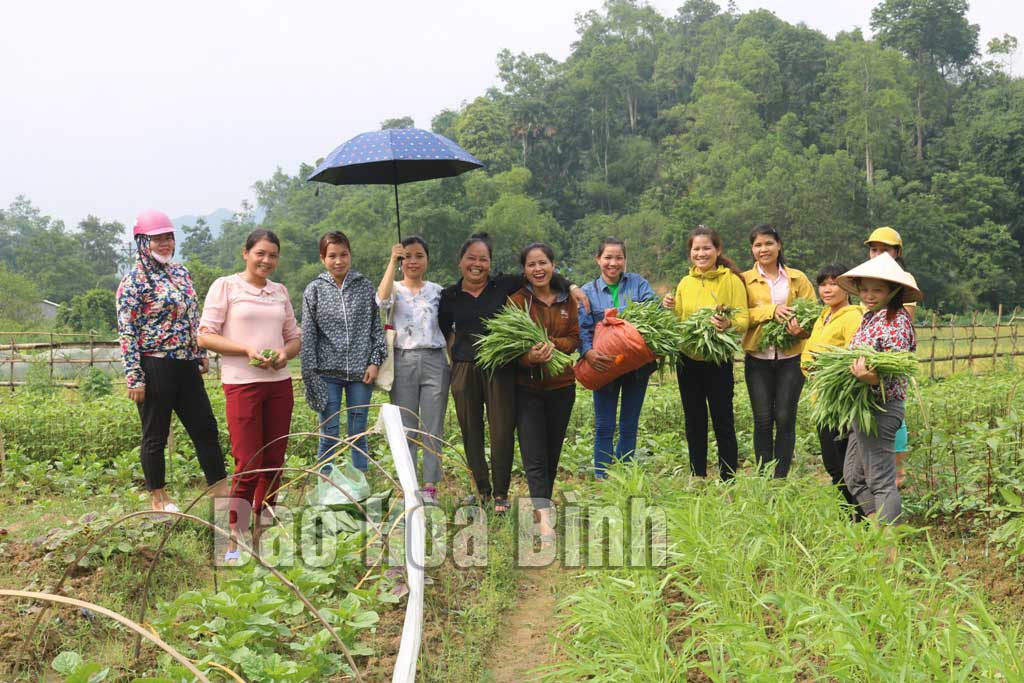



Photo: An organic vegetable model by women in Nuong Dam commune’s Lam Trong hamlet contributes to raising their incomes and boosting local socio-economic development.
Bui Quang Hop, deputy head of the Kim Boi Ethnic Minority Office, said over the past two years, complicated developments of the COVID-19 pandemic had affected the life and economic growth of the ethnic groups.
In fact, in the past three years, not much capital was channeled into the district’s ethnic sector. Therefore, it has focused on effectively using resources to ensure social security for the communities.
In 2021, Kim Boi distributed 3 billion VND (129,366 USD) worth of non-refundable aid from the Irish Government among its communes of Nuong Dam, Du Sang and Tu Son for the construction of four rural roads. It also implemented the second phase of a project on strengthening self-reliance capacity for local ethnic minority communities. Sponsored by the Bread for the World, the project aimed at economic restructuring, income increase, job creation, and new-style rural building.
Last year, the district completed 17 out of its 18 set targets and its economy grew over 13.8 percent.The local average per capita income reached 37.3 million VND, while its poverty rate decreased to 6.2 percent. The percentage of rural households having access to hygienic water and electricity were 96 and 100 percent, respectively.
This year, Kim Boi set out 17 goals, targeting an annual average per capita income of 42 million VND and a 3.5 percent reduction in the rate of poverty households.
Toward such goals, right from the beginning of the year, drastic actions have been made to attract investment and support the ethnic communities./.